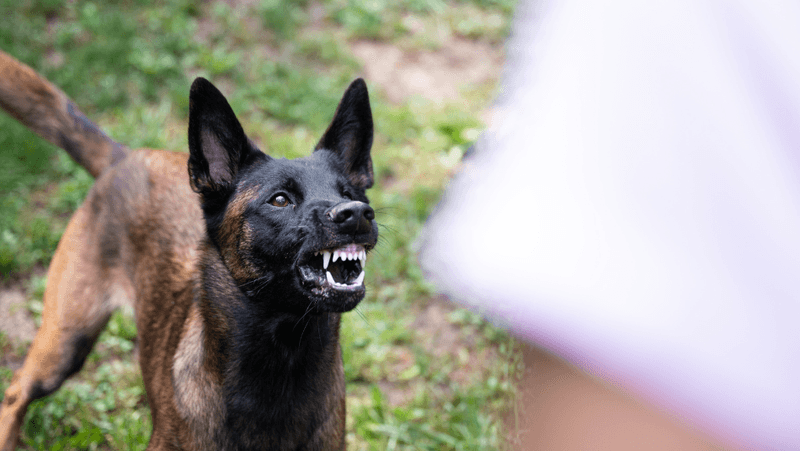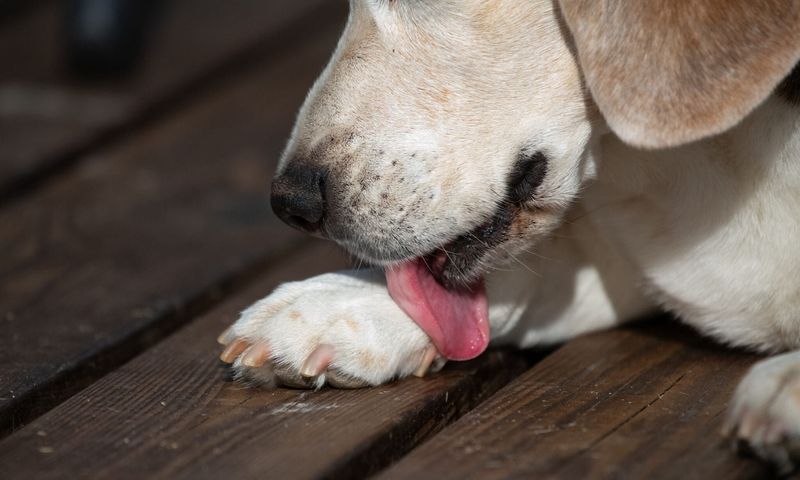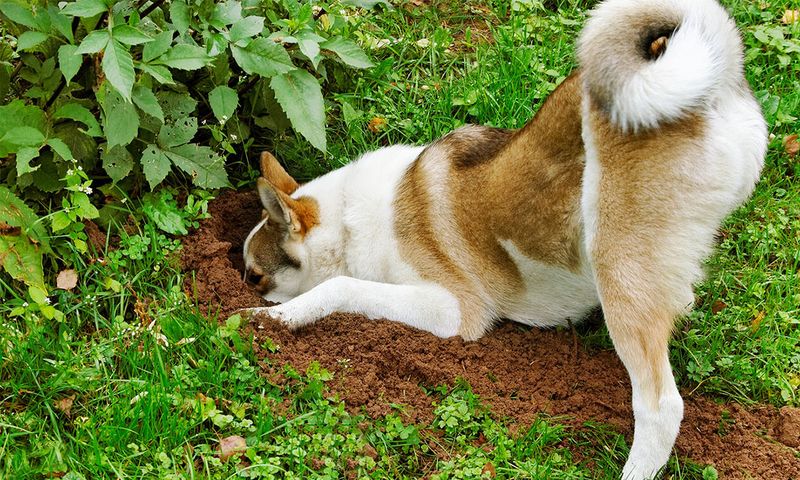Dogs are masters at hiding pain — sometimes until it’s almost too late.
That goofy tail wag, that sudden shyness, that weird new obsession with licking the couch? It’s not just “dogs being dogs.” Sometimes, it’s their only way of waving a giant red flag in your face.
Miss the signs, and you might be missing a silent cry for help.
Our pups aren’t drama queens; when they act different, they mean it. Their little quirks could be whispers from a body or mind that needs your attention now.
Let’s decode their secret messages — before a tail wag becomes a warning.
Sudden Aggression

When your usually calm companion suddenly turns into a growling, snarling bundle of anger, it’s an undeniable cause for concern. A dog showing unprovoked aggression might be dealing with pain or fear, or it could be influenced by environmental changes.
Imagine a dog once as soft as a summer breeze, now resembling a stormy cloud. Addressing this behavior early is crucial. Consult a veterinarian or a professional trainer to uncover underlying causes and develop a plan to restore peace. Recognize that this isn’t just a phase; it could be a plea for help.
Excessive Licking

Excessive licking, especially when it becomes an obsession, might be more than just a quirky habit. It could indicate allergies, anxiety, or even pain. Imagine a dog whose tongue works overtime, turning every surface into a canvas.
While some licking is normal, overdoing it can lead to sores or infections. If your furry friend seems to be constantly grooming, it might be time for a trip to the vet. Address this behavior by exploring potential causes and seeking appropriate treatment to ensure your pet’s health and comfort.
Pacing Restlessly

When a dog paces like it’s auditioning for a marathon, it’s time to pay attention. Restless pacing can signal anxiety, cognitive dysfunction, or physical discomfort. Picture a dog, once an easygoing companion, now a bundle of nerves on constant patrol.
While it might seem like a minor curiosity, this behavior can point to underlying stress or health issues. Observing and understanding the context is key. A visit to the vet can help rule out medical problems, while behavioral adjustments may alleviate anxiety and restore calm to your dog’s life.
Sudden Appetite Changes

Dogs are known for their hearty appetites, so a sudden change in their eating habits may raise eyebrows. A dog that refuses its favorite meal or suddenly craves more food might be signaling digestive issues, dental problems, or emotional distress.
Picture a dog that once emptied its bowl in a heartbeat, now turning away with disinterest. Understanding the root of this change is crucial. Consulting a vet can help identify potential health concerns and provide guidance to manage or treat the underlying issue effectively.
Excessive Barking

Barking is a dog’s natural way of communicating, but when it becomes excessive, it might be more than just a nuisance. A dog that barks endlessly could be experiencing anxiety, boredom, or a territorial urge.
Imagine a dog whose bark seems to echo through the neighborhood, day and night. While barking is normal, understanding its context is key to addressing the underlying cause. Consult a professional if warranted, and explore training methods to help your canine companion find their calm.
Hiding Frequently

A dog that frequently seeks the solace of a hiding spot might be communicating fear, anxiety, or a desire for solitude. Picture a dog that once explored the world, now retreating to the shadows.
While occasional hiding is typical, frequent or prolonged behavior can indicate a more significant issue. Determining the cause is essential to provide the right support. A comforting environment and professional guidance might be needed to coax your friend back into the light.
Changes in Sleeping Patterns

Dogs, like humans, have their sleep patterns. A sudden change, such as excessive sleeping or insomnia, might indicate health issues such as hormonal imbalance or discomfort.
Imagine a dog that once woke with the sunrise, now dozing through the day. These patterns can provide clues to your dog’s health, making it essential to consult a vet if changes persist. Recognizing and addressing the underlying cause can restore your dog’s vitality and joy.
Destructive Chewing

Chewing is a natural behavior for dogs, but when it becomes destructive, it signals something more. A dog that turns your home into a chew toy might be bored, anxious, or teething.
Picture a dog whose teeth seem to leave no stone unturned, transforming furniture into confetti. Understanding why your dog chews destructively is the first step in curbing this behavior. Providing appropriate chew toys and addressing underlying issues can help preserve your home and your pet’s well-being.
Ignoring Commands

When a well-trained dog suddenly starts ignoring commands, it may not just be a case of selective hearing. It could indicate hearing loss, cognitive issues, or even emotional distress.
Imagine a dog once eager to please, now aloof and distant. This change deserves attention and understanding. A thorough assessment by a professional can uncover the root of this behavior and guide you in finding ways to reconnect with your furry friend.
Excessive Digging

Digging is a natural instinct, but when it becomes excessive, it could be a red flag. A dog that digs relentlessly might be driven by anxiety, boredom, or a need for a cool spot.
Imagine a dog transforming your garden into a landscape of craters. Understanding the motivation behind this behavior is key to mitigating its impact. Providing mental stimulation and a designated digging area might redirect their energy and save your garden from further excavation.
Unusual Vocalizations

Dogs communicate through various sounds, but unusual vocalizations might signal distress or health issues. A dog making odd noises might be in pain or experiencing cognitive changes.
Imagine a dog whose voice seems to tell a story of discomfort or confusion. Listening and observing when these sounds occur can provide clues. Consulting a veterinarian can help determine if there’s a medical reason or if behavioral adjustments are needed.
Limping or Lameness

Limping or lameness in dogs is a clear signal that something’s amiss. A dog that struggles to walk might be dealing with injury, arthritis, or other health issues.
Picture a dog that once bounded with joy, now gingerly treading each step. Recognizing this change should prompt immediate attention. A visit to the vet is essential to diagnose and treat the underlying cause, ensuring that your pet can enjoy mobility again.
Shivering or Trembling

Shivering or trembling isn’t always about feeling cold. A dog exhibiting these signs might be dealing with anxiety, fear, or even a medical condition.
Imagine a dog that seems to quiver like leaves in the wind, even in a warm room. Observing when your dog shivers can help identify triggers. Addressing these behaviors with patience and professional guidance can help ease their discomfort and restore their sense of safety.
Loss of House Training

A dog suddenly forgetting its house training can be distressing for both the pet and owner. This behavior might point to medical issues, stress, or changes in the home environment.
Picture a dog that once followed the house rules flawlessly, now leaving unexpected surprises. Understanding the cause is crucial. A vet can help rule out medical problems, while consistent reinforcement and environmental adjustments can aid in re-establishing good habits.
Unusual Eye Movements

Unusual eye movements, such as darting or rolling, can indicate neurological issues or vision problems. A dog displaying these symptoms might be communicating discomfort or confusion.
Imagine a dog whose eyes seem to dance unpredictably. Recognizing and addressing these movements promptly with a veterinarian can help diagnose potential underlying health issues and guide appropriate treatment to ensure your pet’s well-being.
Frequent Scratching or Biting

Frequent scratching or biting can be more than just a minor annoyance. It may indicate allergies, parasites, or skin conditions. Imagine a dog whose constant scratching seems like an endless itch.
Addressing this behavior is vital to prevent infections and ensure comfort. Consult a vet to identify the cause and explore treatment options that can relieve your furry friend’s discomfort, leading them back to a state of relaxation and contentment.

